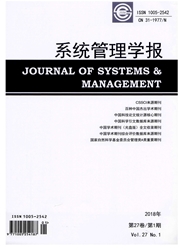

 中文摘要:
中文摘要:
基于投资者异质性构建流动性黑洞模型,分析风险中性投资者触发风险规避投资者采用正反馈交易进行止损的条件和概率,给出最优的风险规避投资者数量与风险资产价值和止损价之间的函数关系。由风险规避投资者的止损价和风险偏好投资者的买入价之间的关系,确定这两类投资者进行交易的条件。根据这两类投资者的数量对比、交易价格关系和博弈过程,给出市场均衡的条件,研究流动性黑洞的形成机理。基于非流动性和流动性风险构建流动性黑洞测度指标,通过对沪市数据的实证,发现在市场发生流动性黑洞时,正反馈交易比流动性正常情况下要强烈。由于市场缺乏异质性,造成买卖指令的严重失衡,当市场中的负反馈交易者提供的流动性远小于正反馈交易者对流动性的需求时,就会引发流动性黑洞,这与模型的逻辑关系相一致。
 英文摘要:
英文摘要:
We construct a liquidity black holes model based on investors' heterogeneity and analyze the condition and probability of risk-averse investors' stop-loss strategy triggered by risk neutral investors. We give the optimal number of risk-averse investors who are reflected by the functional relationship between the value of risk asset and the stop-loss price. By studying the relationship between the stop-loss price of risk-averse investors and the largest buying price of risk-seeking investors, we determine their trading conditions. Meanwhile, based on comparison of the number, trading price as well as game process of those two kinds of investors, we show the condition of market equilibrium. A liquidity black hole measurement index is constructed based on illiquidity and risk of liquidity. Positive feedback trading under liquidity black hole is stronger than the normal liquidity condition in Shanghai stock exchange. A serious sale order imbalance exists because of lacking of heterogeneity. When the negative feedback traders provide liquidity much less than the positive feedback traders' demand, it leads to the liquidity black hole, and it is consistent with the logic of the model.
 同期刊论文项目
同期刊论文项目
 同项目期刊论文
同项目期刊论文
 期刊信息
期刊信息
